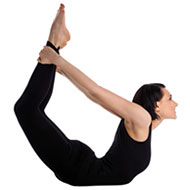- Aromatherapy (36)
- Benefits of Yoga (282)
- Home Remedies (1087)
- massage therapy (9)
- Preventive Therapy (135)
- Running (41)
- Skin Care (15)
- Stress Relief (25)
- Stretching (5)
- walking (33)
- Womens Health (14)
- Yoga Benefits for Pregnant Women (16)
- Yoga Benefits for Students (3)
- Yoga for Children (11)
- Yoga for Holistic Living (37)
- Yoga for Midlife Crisis (3)
- Yoga for Senior Citizens (2)
- Yoga for the Workplace (1)
- Yoga Health Tips (185)
- Yoga Practice during Menstruation (5)
Yoga Asanas To Cure and Overcome Gall Bladder Disorders

The gall bladder stores bile which is secreted by the liver and assists in the digestion and absorption of fats and minerals. If there’s any disturbance in the composition of the bile, then this can cause inflammation that irritates the lining of the gall bladder, leading to stone formation. If you experience nausea, indigestion, constipation, gas, disturbed vision as well as anemia, acne, dizziness and intolerance to fats, then you may want to consult a doctor about gall bladder disorders. Gall bladder disorders are caused by digestive disturbance, excessive intake of fats and carbohydrates, hereditary factors and stress and poor health.
Can Yoga Cure Gall Bladder Disorders?
Yes, While consulting a doctor is important, you may want to explore natural cures for gall bladder disorders. The first thing that you should do is drink plenty of water so that the stones are washed out. You should also eat plenty of fresh vegetables and fresh fruit and vegetable juices. It’s a good idea to avoid refined carbohydrates and sugars found in carbonated and alcoholic drinks.
Yoga Exercises To Overcome
Regular and appropriate exercise can also help in curing gall bladder disorders. There are several yoga asana like sarvangasana, paschimot asana, dhanurasana, shalabhasana and bhujangasana that can tone up the liver and keep the gall bladder in good health.
- Sarvangasana or shoulder stand is one of the most important yoga asana. You need to first lie on the back with your hands under the mid-back, then lift your legs and lower body, so that the weight of the body is supported on the head, neck, upper back and arms. You need to look at your toes while in this position.
- In Shalabhasana or locust pose, you need to raise the left leg from the waist, keeping it straight in the knee. Keep the toe stretched and breathe normally. This asana activates the blood circulation as well as the small and big intestine and some enzyme producing glands.
- In Dhanurasana or Bow pose, you need to lie on your belly, hold your feet and lift your legs into the shape of a bow. Your abdomen and back muscles are strengthened through this position.
- In Bhujangasana or cobra position, you need to lie down on the floor in a face down position. Then place your hands on the floor, parallel to your shoulders and raise your upper body while applying pressure on the floor with your hands. Your legs need to firmly planted on the ground. This yoga posture strengthens the spine, stretches the abdomen, shoulders, chest and lungs, firms the buttocks and relieves stress.
- In Paschimotasana or the back-stretching posture, you need t sit in a comfortable position with your legs outstretched. Then bend your head to touch your knees and exhale completely. Hold your toes with your fingers. You can maintain this position for some time, exhaling and inhaling deeply. This asana stimulates the liver, pancreas and kidney.
It’s advisable to work with a professional yoga instructor who can guide you through the right set of exercises.
- RSS Feeds -
- All posts
- All comments
- Yoga to overcome eating disorders Eating disorders such as bulimia, anorexia nervosa, and compulsive eating are em...
- Accupressure For Healthy Life Acupressure is the holistic art of getting healthy. It doesn’t emphasiz...
- Benefits Of Navasana Navasana is known as the boat pose because when you look at the asana it woul...
- Yoga For Hip And Groin Baddha Konasana (Bound Angle Pose) is also known as the Cobbler's Pose be...